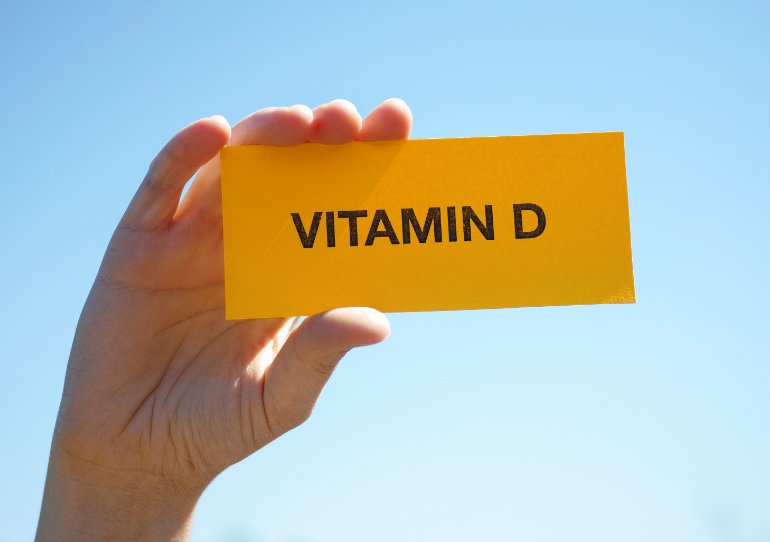- Home
- Editorial
- News
- Practice Guidelines
- Anesthesiology Guidelines
- Cancer Guidelines
- Cardiac Sciences Guidelines
- Critical Care Guidelines
- Dentistry Guidelines
- Dermatology Guidelines
- Diabetes and Endo Guidelines
- Diagnostics Guidelines
- ENT Guidelines
- Featured Practice Guidelines
- Gastroenterology Guidelines
- Geriatrics Guidelines
- Medicine Guidelines
- Nephrology Guidelines
- Neurosciences Guidelines
- Obs and Gynae Guidelines
- Ophthalmology Guidelines
- Orthopaedics Guidelines
- Paediatrics Guidelines
- Psychiatry Guidelines
- Pulmonology Guidelines
- Radiology Guidelines
- Surgery Guidelines
- Urology Guidelines
Vitamin D deficiency not linked to NAFLD severity in children, confirms study

Vitamin D deficiency not linked to NAFLD severity in children confirms a new study. The impact of vitamin D deficiency on the fatty liver has been discussed in prior studies. Many studies have demonstrated an inverse association between fatty liver and vitamin D deficiency whereas, few did not find any association between the two.
Children with non-alcoholic fatty liver disease (NAFLD) commonly have deficient and insufficient levels of vitamin D but their severity of the disease is not dependent on vitamin D deficiency, a recent study published in the European Journal of Clinical Nutrition has found.
Deficiency of Vitamin D is quite common in children. as they may spend lesser and lesser time outdoors nowadays. Vitamin D is synthesised in the body in the presence of sunlight. However, there are certain foods like milk and milk products, mushrooms, eggs, fatty fish, etc, that can also provide the body with some Vitamin D.
Marialena Mouzaki, Department of Pediatrics, University of Cincinnati College of Medicine, Cincinnati, OH, USA, and colleagues determined the association between serum 25-hydroxyvitamin D (25(OH)-D) concentration and histologic NAFLD severity.
The researchers collected clinical laboratory and histology data retrospectively in a pediatric cohort with biopsy-confirmed NAFLD. Vitamin D deficiency (≤20 ng/ml), insufficiency (21–30 ng/ml), and sufficiency (≥31 ng/ml) were determined by serum 25(OH)-D concentrations. The study involved 234 patients (78% non-Hispanic, median age 14 years).
Also Read: Dietary intake of vitamin E and C protects from NAFLD-related liver damage
Key findings include:
- The majority (n = 193) were either vitamin D insufficient (50%) or deficient (32%).
- Eighty-four patients (36%) reported taking vitamin D supplements at the time of biopsy; serum 25(OH)-D concentrations were not higher in those supplemented.
- There were no differences in the demographic, clinical, and laboratory characteristics of the three vitamin D status groups.
- The severity of steatosis, ballooning, lobular/portal inflammation, and NAFLD activity score were also not different between the groups.
- The proportion of patients with significant fibrosis (stage ≥ 2) was higher in those with insufficiency (29%) compared to those who were sufficient (17%) or deficient (15%).
- After controlling for important covariates selected from age, body mass index, ethnicity, vitamin D supplementation, and season, the insufficient group had increased odds of a higher fibrosis score compared to the sufficient group.
Also Read: Dietary intake of vitamin E and C protects from NAFLD-related liver damage
"Prospective longitudinal studies are needed to determine optimal dosing strategies to achieve sufficiency and to determine whether adequate supplementation has an impact on histology," concluded the authors.
To read the complete study log on to https://doi.org/10.1038/s41430-019-0493-y

Disclaimer: This site is primarily intended for healthcare professionals. Any content/information on this website does not replace the advice of medical and/or health professionals and should not be construed as medical/diagnostic advice/endorsement or prescription. Use of this site is subject to our terms of use, privacy policy, advertisement policy. © 2020 Minerva Medical Treatment Pvt Ltd